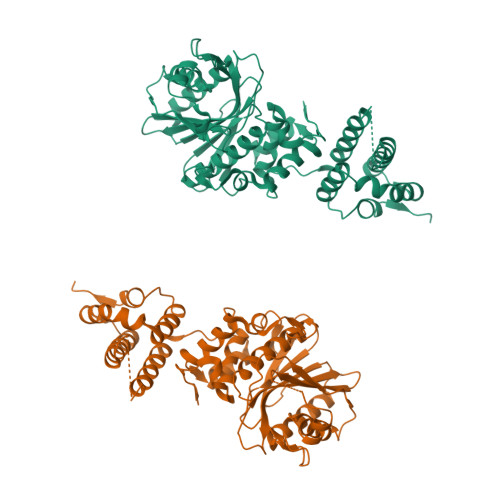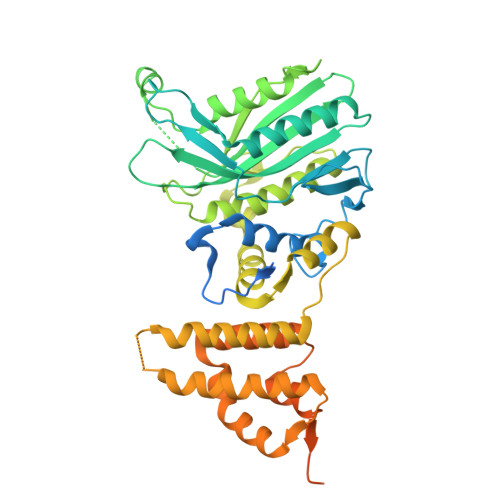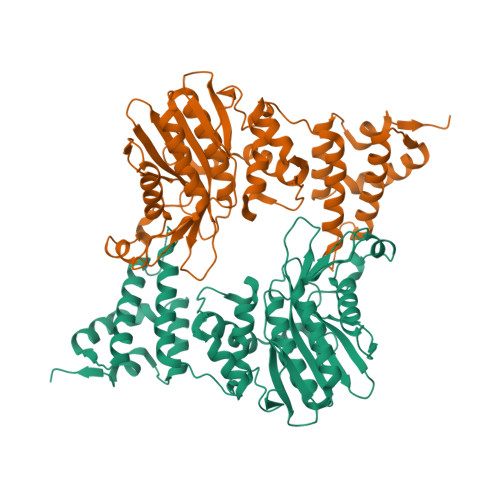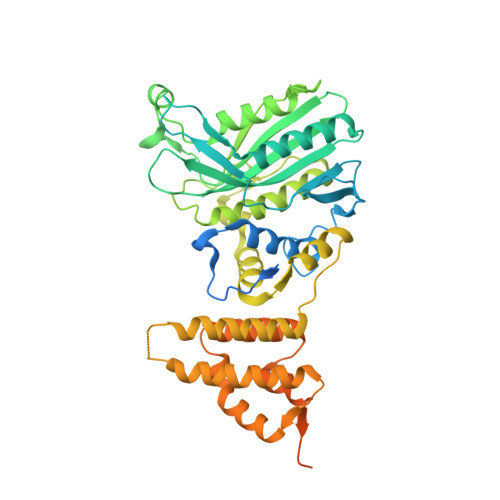The 1:2 complex between RavZ and LC3 reveals a mechanism for deconjugation of LC3 on the phagophore membrane
Kwon, D.H., Kim, S., Jung, Y.O., Roh, K.H., Kim, L., Kim, B.-W., Hong, S.B., Lee, I.Y., Song, J.H., Lee, W.C., Choi, E.J., Hwang, K.Y., Song, H.K.(2017) Autophagy 13: 70-81
- PubMed: 27791457
- DOI: https://doi.org/10.1080/15548627.2016.1243199
- Primary Citation of Related Structures:
5HZY, 5IO3, 5IZV - PubMed Abstract:
Hosts utilize macroautophagy/autophagy to clear invading bacteria; however, bacteria have also developed a specific mechanism to survive by manipulating the host cell autophagy mechanism. One pathogen, Legionella pneumophila, can hinder host cell autophagy by using the specific effector protein RavZ that cleaves phosphatidylethanolamine-conjugated LC3 on the phagophore membrane. However, the detailed molecular mechanisms associated with the function of RavZ have hitherto remained unclear. Here, we report on the biochemical characteristics of the RavZ-LC3 interaction, the solution structure of the 1:2 complex between RavZ and LC3, and crystal structures of RavZ showing different conformations of the active site loop without LC3. Based on our biochemical, structural, and cell-based analyses of RavZ and LC3, both distant flexible N- and C-terminal regions containing LC3-interacting region (LIR) motifs are important for substrate recognition. These results suggest a novel mechanism of RavZ action on the phagophore membrane and lay the groundwork for understanding how bacterial pathogens can survive autophagy.
Organizational Affiliation:
a Department of Life Sciences , Korea University , Seongbuk-gu, Seoul , Korea.





















